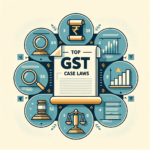The Future of GST in India: Predictions for 2025 and Beyond
Since its historic implementation in 2017, the Goods and Services Tax (GST) has been a dynamic and constantly evolving system, reshaping India’s indirect tax landscape. As we look towards 2025 and beyond, several significant changes are on the horizon, promising to further streamline and strengthen this unified tax regime. This article delves into the top future of GST predictions that every business owner and taxpayer in India should know about, providing a clear roadmap of what to expect. Understanding the GST outlook India 2025 and beyond is not just about compliance; it’s crucial for strategic financial planning, adapting your business operations, and leveraging new opportunities in a transforming economy.
The GST Journey So Far: A Quick Recap
Before looking forward, it’s helpful to glance back at the journey of GST in India. Launched on July 1, 2017, GST replaced a complex web of over 17 central and state indirect taxes, including VAT, Service Tax, and Excise Duty, with a single, unified system. The primary goal was to create a “One Nation, One Tax, One Market” framework.
Key achievements over the years include a significant improvement in tax collection, with monthly revenues consistently crossing the ₹1.5 lakh crore mark, and a notable formalization of the economy as more businesses have come into the tax fold. The system has boosted transparency and efficiency in logistics and supply chains. However, the path hasn’t been without its challenges. Businesses, especially small and medium-sized enterprises (SMEs), faced initial compliance hurdles, complex return filing processes, and frequent amendments to the law. These growing pains have set the stage for the next phase of evolution, focusing on simplification, rationalization, and technological advancement.
Key Future of GST Predictions for 2025 and Beyond
Based on reports from GST Council meetings, expert analysis, and government initiatives, here are the most significant future of GST predictions that could reshape India’s tax landscape in the coming years.
1. Simplification of GST Slabs: A Move Towards a 3-Rate Structure?
One of the most widely discussed GST trends in India 2025 is the rationalization of the tax slab structure. The current system is multifaceted, with multiple rates creating complexity for businesses and consumers alike.
Current Structure:
- 0%: Essential goods.
- 3%: Gold, silver, and precious stones.
- 5%: Mass consumption items like sugar, tea, and basic electronics.
- 12%: Processed foods, mobile phones, and certain services.
- 18%: Most goods and services, including capital goods and industrial intermediates.
- 28%: Luxury and sin goods like large cars, air conditioners, and tobacco products.
The prediction gaining the most traction is the merging of the 12% and 18% slabs into a single, median rate, possibly around 15% or 16%. This would simplify the tax structure to three primary rates, likely 5%, a new median rate, and 28%. This change would significantly ease the burden on businesses by reducing classification disputes, which often arise when a product could arguably fall into either the 12% or 18% category. For consumers, this could mean that some goods become cheaper while others get slightly more expensive, but the overall system becomes far more transparent and easier to understand.
2. Bringing Petrol, Diesel, and ATF Under the GST Ambit
Currently, some of the most crucial commodities for the Indian economy—petrol, diesel, and Aviation Turbine Fuel (ATF)—are kept outside the GST framework. They are instead subject to high central excise duties and varying state-level Value Added Tax (VAT), leading to significant price differences across the country.
There is a strong and persistent push to bring these petroleum products under GST. This move is predicted to be a game-changer. The primary benefit would be the uniformity of fuel prices across India, putting an end to “fuel tourism” where commercial vehicles flock to states with lower taxes. For the logistics and transportation sector, this would be a massive boost, as they would be able to claim Input Tax Credit (ITC) on fuel, directly reducing their operational costs. This has a cascading positive GST impact on Indian economy, potentially lowering inflation on everything from vegetables to manufactured goods. However, the biggest hurdle remains the potential revenue loss for state governments, which rely heavily on fuel taxes. Reaching a consensus in the GST Council is the critical next step.
3. Enhanced Technology Integration: AI and Machine Learning in Compliance
The government’s Digital India initiative is deeply integrated with the future of GST. The GST Network (GSTN) is already one of the world’s most sophisticated tax platforms, and the next phase involves leveraging cutting-edge technology for enhanced compliance and fraud detection.
- E-invoicing 2.0: The e-invoicing mandate is expected to be expanded to cover a larger number of businesses, eventually including most B2B transactions. This system allows for the real-time validation of invoices, leaving no room for fake billing.
- AI-Powered Audits: The tax department is increasingly using Artificial Intelligence (AI) and Machine Learning (ML) to analyze the vast amounts of data collected by the GSTN. AI algorithms can flag suspicious transactions, identify high-risk taxpayers, detect fraudulent Input Tax Credit (ITC) claims, and enable faceless assessments without direct interaction between the taxpayer and the officer.
- Advanced Data Analytics: The GST data provides a real-time pulse of the economy. The government will use this data for more accurate economic forecasting, sectoral analysis, and informed policy-making. For businesses, this means that accurate and timely data entry into their accounting systems is no longer just a compliance requirement—it’s a necessity to avoid automated red flags.
4. Streamlining Returns and ITC Claims
One of the most persistent pain points for small businesses has been the complexity of filing multiple returns (like GSTR-1 for sales and GSTR-3B for summary and payment) and the intricate process of ITC reconciliation. Mismatches between these returns often lead to notices and working capital blockages.
To address this, the GST Council has long been working on a simplified return system. The prediction is the eventual introduction of a single, simplified monthly return. This new return would likely combine the features of GSTR-1 and GSTR-3B, auto-populating data from e-invoices and other sources to minimize manual entry and errors. For small businesses, this would be a monumental relief, significantly reducing the time, effort, and cost associated with monthly compliance.
What These GST Trends Mean for You
These predicted changes are not just technical amendments; they will have a real-world impact on both businesses and individuals.
For Small Business Owners
- Easier Compliance: A move to a 3-rate structure and a single monthly return will dramatically reduce the administrative burden. You will spend less time on tax calculations and filing, freeing up resources to focus on your core business.
- Cash Flow Impact: If petrol and diesel are brought under GST, your transportation and logistics costs could decrease significantly due to the availability of ITC. This can directly improve your profit margins and cash flow.
- Technology Imperative: The rise of AI-driven compliance means that maintaining clean, accurate digital records is non-negotiable. It’s time to invest in robust, cloud-based accounting software that can integrate with the GSTN and handle e-invoicing seamlessly.
- Call to Action: Now is the time to review your current accounting and compliance processes. Are they ready for real-time data validation and automated scrutiny?
For Salaried Individuals
- Impact on Household Budget: Changes in GST rates directly affect your wallet. Merging the 12% and 18% slabs could make some services like restaurant bills or movie tickets slightly more or less expensive. The inclusion of fuel under GST could lead to lower and more stable petrol prices, reducing your monthly transportation expenses.
- Broader Economic Context: These reforms are a core part of the
future of taxation in India 2025. A more efficient and transparent GST system strengthens the national economy. It helps curb inflation, boosts manufacturing, and increases government revenue, which can then be used for public infrastructure and services. A stable economy ultimately translates to better job security and income growth for everyone.
How to Prepare for the Evolving GST Landscape
Change can be challenging, but preparation is key to turning it into an opportunity.
- Stay Informed: The world of GST is constantly changing. Regularly follow official updates from government sources.
- Official GST Portal: https://www.gst.gov.in/
- Central Board of Indirect Taxes and Customs (CBIC): https://www.cbic.gov.in/
- Upgrade Your Technology: Manual bookkeeping is no longer viable. Switch to a reliable, cloud-based accounting software that provides automatic updates for GST law changes, e-invoicing generation, and seamless return filing.
- Seek Expert Guidance: Navigating these changes can be complex. Consulting with tax professionals can ensure your business remains compliant, avoids penalties, and is structured to leverage any new benefits from the evolving tax system.
Conclusion: Embracing the Next Chapter of GST in India
The next few years are set to be transformative for GST in India. The overarching goal behind all the future of GST predictions—from rate rationalization and the inclusion of fuel to the deep integration of technology—is to create a tax regime that is simpler, more transparent, and business-friendly. These changes will undoubtedly present a learning curve, but they pave the way for a more efficient and robust economic future. The GST outlook India 2025 and beyond is one of proactive transformation. By staying informed and prepared, you can adapt and thrive in this new era. For expert assistance in navigating your GST compliance and planning for the future, contact TaxRobo’s experts today.
Frequently Asked Questions (FAQs)
1. When will petrol and diesel likely come under GST?
While there is strong momentum and political will, the exact timeline depends on the GST Council reaching a consensus with all states, primarily on the revenue-sharing model. Most predictions point towards serious discussions and a potential decision in late 2024 or 2025. It is a complex issue but remains a top priority for reform.
2. How will the new GST changes affect my small business’s compliance costs?
In the long run, the primary goal of these reforms is to reduce compliance costs. Simplified returns and clearer tax slabs will mean less time and fewer resources spent on filing and reconciliation. However, there might be a short-term cost associated with upgrading accounting software or training staff to adapt to new processes like expanded e-invoicing.
3. What is the single most important GST trend to watch in India for 2025?
The integration of AI and machine learning into the GSTN portal is a critical trend to watch. This will fundamentally change how compliance, scrutiny, and audits are conducted. It shifts the focus from reactive, manual checks to proactive, data-driven surveillance, making accurate and timely data entry more important than ever for businesses to maintain a clean compliance record.
4. As a salaried person, why should the future of taxation in India 2025 matter to me?
Changes in indirect taxes like GST directly impact your purchasing power and the cost of living. A more efficient and leak-proof GST system can lead to more stable prices for goods and services, helping to curb inflation. Furthermore, it contributes to overall economic growth and stability, which in turn affects job security, market health, and your long-term financial well-being. Understanding these trends helps you make better-informed personal financial decisions.



